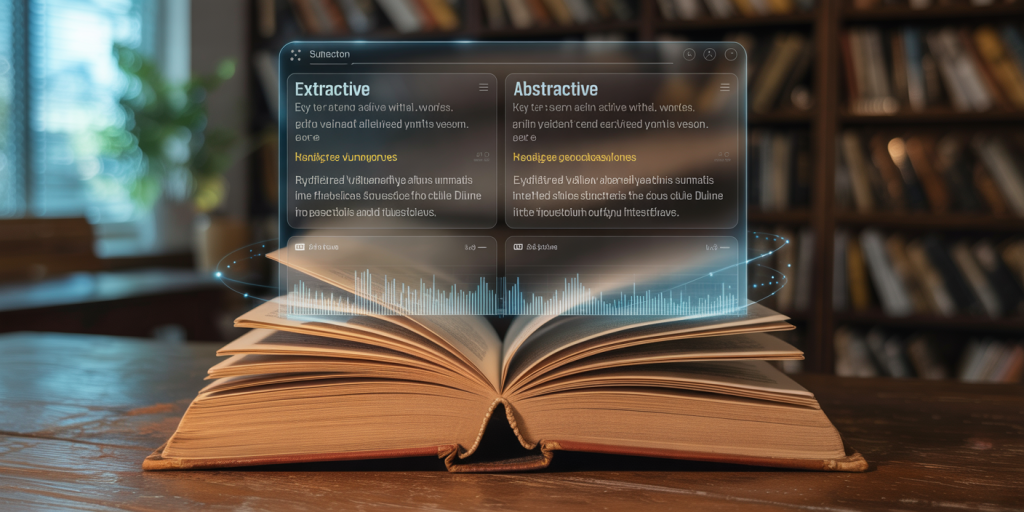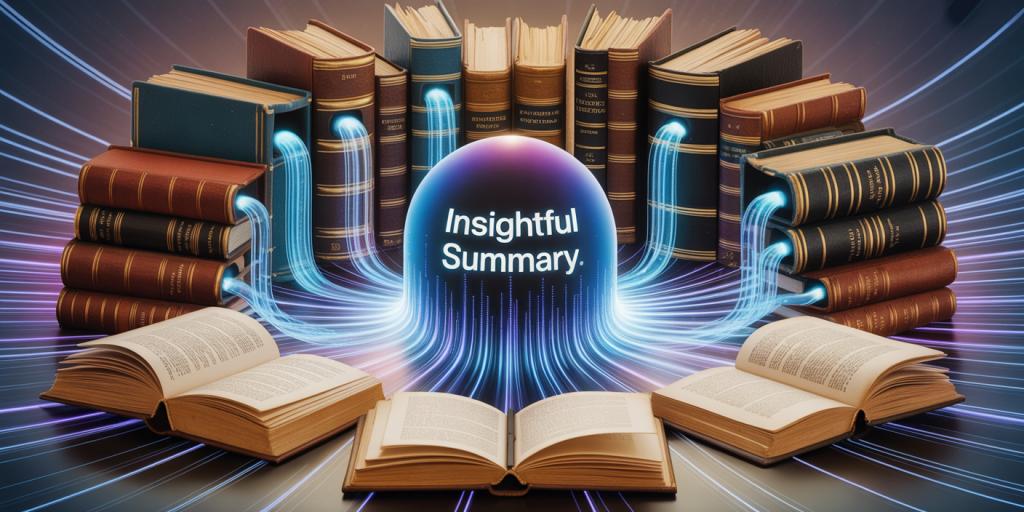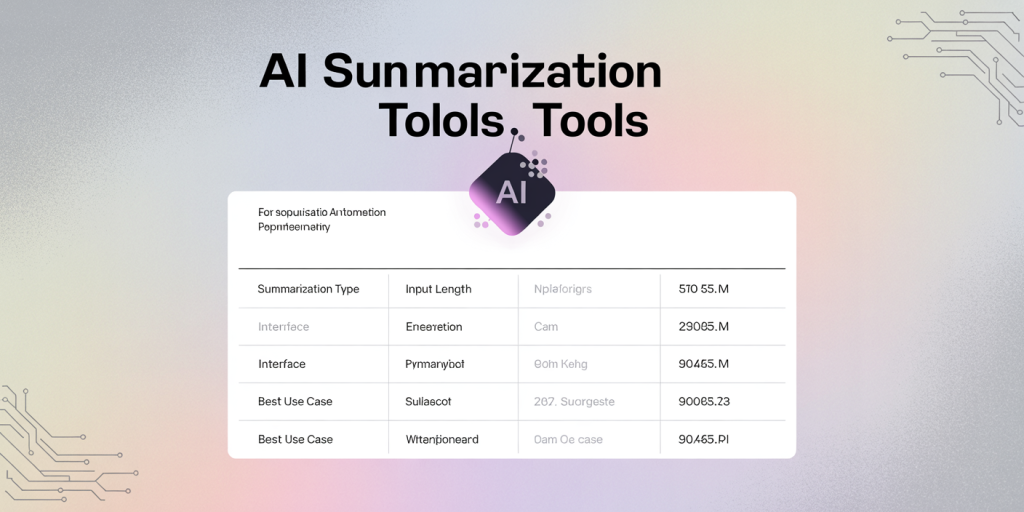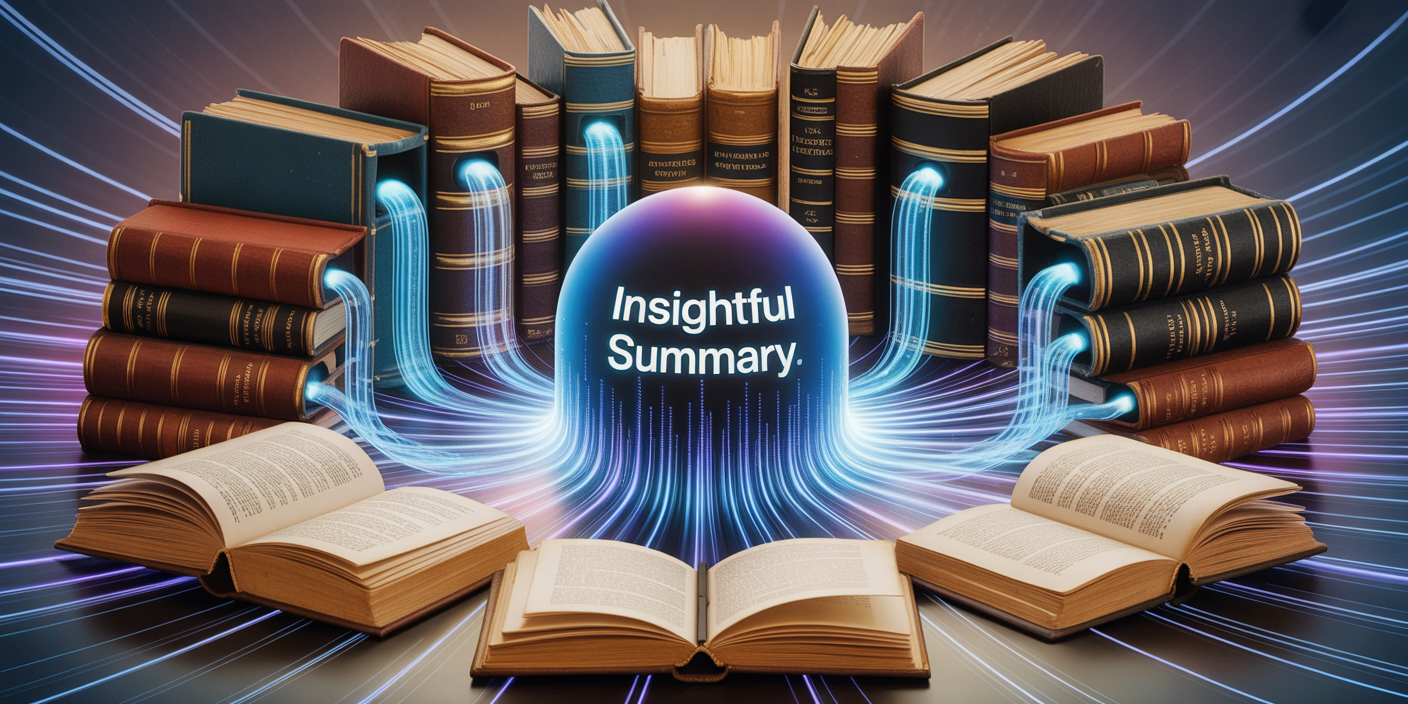How to Use AI to Summarize and Synthesize Books You Read
The explosion of AI technology has transformed many traditional practices, including how we process and retain knowledge from books. As the volume of reading material increases, leveraging artificial intelligence to distill and integrate key ideas from books becomes a practical necessity. This article explores effective methods for using AI to summarize and synthesize books, enabling readers to enhance comprehension, retain crucial insights, and apply content more efficiently in both academic and professional contexts.
The rise of AI summarization tools comes alongside increasing demands to manage time and information overload. According to a 2023 Pew Research study, 59% of adults admit they struggle to allocate sufficient time for deep reading due to busy schedules and information distractions. AI-powered solutions offer a promising way to bridge this gap by automating the creation of concise yet meaningful summaries and structured syntheses from extensive texts. This allows readers to quickly grasp essential concepts or build connections between multiple readings without sacrificing depth.
Understanding AI Summarization: Methods and Applications
AI summarization leverages natural language processing (NLP) algorithms to extract or generate condensed versions of texts while preserving the original meaning. There are two principal methods: extractive and abstractive summarization. Extractive summarization involves identifying key sentences or passages from the source material and compiling them verbatim. In contrast, abstractive summarization rephrases the content, creating a more fluid and human-like summary that may include inferred or paraphrased ideas.
For book readers, both methods can be invaluable depending on the purpose. For example, students reviewing dense textbooks might use extractive summaries to highlight specific definitions and concepts for direct reference. On the other hand, professionals seeking overarching themes or narrative arcs in fiction or nonfiction works could benefit more from abstractive summaries that connect ideas coherently.
Popular AI tools today combine both approaches for optimal results. Services like OpenAI’s GPT models can read and output abstractive summaries, condensing chapters into digestible paragraphs while maintaining contextual meaning. Other platforms, such as SummarizeBot and SMMRY, emphasize extractive techniques for quick bullet-point style notes.
Practical Steps to Use AI Tools for Book Summarization
To effectively use AI for summarizing books, follow a structured approach that ensures quality output and meaningful insights:
1. Select the Right Tool: Choose AI summarization software tailored to your needs. If you want quick bullet points, consider extractive tools; for deeper comprehension, abstractive AI systems like ChatGPT or Jasper AI are better.
2. Prepare the Text: Some AI tools require input in smaller chunks due to processing limits. Split chapters or sections into manageable portions (e.g., 5,000 words or less). Formatting text cleanly—removing footnotes or sidebars—can improve AI accuracy.
3. Set Objectives: Clearly define what you want from the summary. Specify if you want a factual overview, thematic synthesis, or a critical breakdown to guide the AI’s output.
4. Iterative Refinement: Generate an initial summary and then use follow-up prompts to deepen or clarify points. For example, ask the AI to “Analyze the author’s main argument in chapter 3” or “List key takeaways from the final section.”
5. Synthesize Multiple Books: Use AI not only to summarize single books but also to integrate ideas from multiple sources on a topic, crafting interconnected syntheses that reveal trends or divergences.
By applying these steps, users can unlock the full power of AI to enhance reading effectiveness and knowledge retention.
Comparative Table: Popular AI Summarization Tools for Books
| Tool Name | Summarization Type | Max Input Length | User Interface | Pricing | Best Use Case |
|---|---|---|---|---|---|
| ChatGPT (GPT-4) | Abstractive | ~8,000 tokens | Interactive chat | Free/Paid | Detailed thematic synthesis |
| SummarizeBot | Extractive | 10,000 words | Web-based | Free | Quick bullet-point notes |
| Jasper AI | Abstractive | ~6,000 tokens | Web + API | Paid | Marketing and content summarizing |
| SMMRY | Extractive | Unlimited (via URL) | Web-based | Free | Fast summaries for articles/books |
| QuillBot | Abstractive | 3,700 characters | Browser extension | Free/Paid | Paraphrasing and concise rewriting |
The table offers a quick overview of tool capabilities for users looking to experiment with different AI summarization options. Selecting the right tool depends heavily on the specific reading goals, input length, and desired output style.

Illustration of AI-powered book summarization showing a digital assistant analyzing and condensing pages of a physical book into concise key points on a screen, highlighting extractive and abstractive methods.

Infographic-style image of a comparative table featuring popular AI summarization tools, displaying their features like summarization type, input length, interface, and best use case in a clean, easy-to-read layout.
Synthesizing Knowledge with AI: From Summary to Insight
Beyond merely summarizing, AI can assist in synthesizing information by connecting ideas across multiple books and generating new insights. Synthesis requires integration — combining elements from different texts into a unified understanding or argument. AI models excel in pattern recognition and can cross-reference themes, historical contexts, and author viewpoints when prompted appropriately.

Visual representation of synthesizing knowledge from multiple books using AI: interconnected books with flowing data lines converging into a unified, insightful summary or mind map.
For instance, a graduate student studying leadership might input summaries from ten bestselling books on leadership principles into an AI synthesis prompt: “Combine the core strategies outlined across these works and identify common traits and contrasting views.” The AI can then create a meta-summary that highlights dominant leadership qualities such as emotional intelligence, decisiveness, or adaptability, while noting any contentious points like transactional versus transformational leadership models.
This approach has clear advantages: Efficiency: AI reduces hours of manual note comparison. Objectivity: AI can identify recurring themes without human biases. Innovation: Unexpected links can emerge between disparate ideas.
Academic institutions and corporations alike have started adopting AI synthesis tools. For example, at University College London (UCL), researchers use AI to analyze and synthesize hundreds of scientific papers weekly, accelerating literature review processes (UCL, 2023).
Enhancing Reading Retention and Learning with AI Summaries
One of the most profound benefits of AI-assisted summarization is improved retention and learning outcomes. According to a 2021 study by the University of Wisconsin-Madison, students who used AI-generated summaries alongside full-text reading scored 25% higher on comprehension tests than those who read only the original text. This demonstrates how distilled, AI-created recaps reinforce understanding by providing a scaffold upon which learners can recall detailed content.
To maximize this effect: Combine AI Summaries with Active Reading: Use AI summaries as previews before reading a full chapter, then cross-check details while reading to cement main points. Create Personalized Study Guides: Many AI tools can be customized to highlight particular themes or question types, aiding exam preparation. Use AI for Periodic Reviews: Generate spaced-repetition-friendly summaries that succinctly remind users of key concepts over time, combating the forgetting curve.
By integrating AI summaries into regular study habits, readers not only save time but achieve more durable learning outcomes.
Addressing Limitations and Ethical Considerations
While AI offers significant advantages, users must be aware of its limitations. Summarization models can sometimes misinterpret nuanced arguments or omit critical context. For example, AI may oversimplify complex philosophical texts, losing subtle distinctions important to understanding. Human oversight remains essential to verify and refine AI outputs.
Ethical considerations also arise around copyright and intellectual property. Feeding entire copyrighted books into AI platforms may violate terms of use or copyright law. Users should ensure that their reading and summarization processes comply with legal standards or use openly licensed texts.
Furthermore, reliance on AI could atrophy critical reading skills if readers become passive consumers of machine-generated summaries. Balancing AI use with active engagement and critical thinking is vital to maintaining intellectual rigor.
Future Perspectives: AI in Book Reading and Knowledge Management
Looking ahead, AI-driven book summarization and synthesis will continue to evolve, integrating more natural language understanding and multimodal processing. Advances in AI may soon allow real-time summary generation from audiobooks or video lectures, offering seamless knowledge consumption regardless of format.
Moreover, personalized AI reading assistants could tailor summaries based on individual learning styles or professional fields. Imagine a writer receiving AI-generated syntheses from hundreds of relevant books, formatted as topic frameworks and annotated with critical questions, saving weeks of research.
As AI models grow in sophistication and accessibility, the boundary between human and machine collaboration in reading and knowledge synthesis will blur, enabling deeper insights at unprecedented speed.
In corporate learning environments, AI may automate the processing of vast internal knowledge bases, transforming passive documents into interactive, summarized knowledge hubs. Education may adopt AI tutors that generate dynamic reading plans and syntheses that adapt to student progress and interests.
While challenges remain in ensuring accuracy, ethical use, and skill development, the integration of AI into book reading promises to democratize access to knowledge, enhance comprehension, and foster intellectual growth in ways previously unimaginable.
